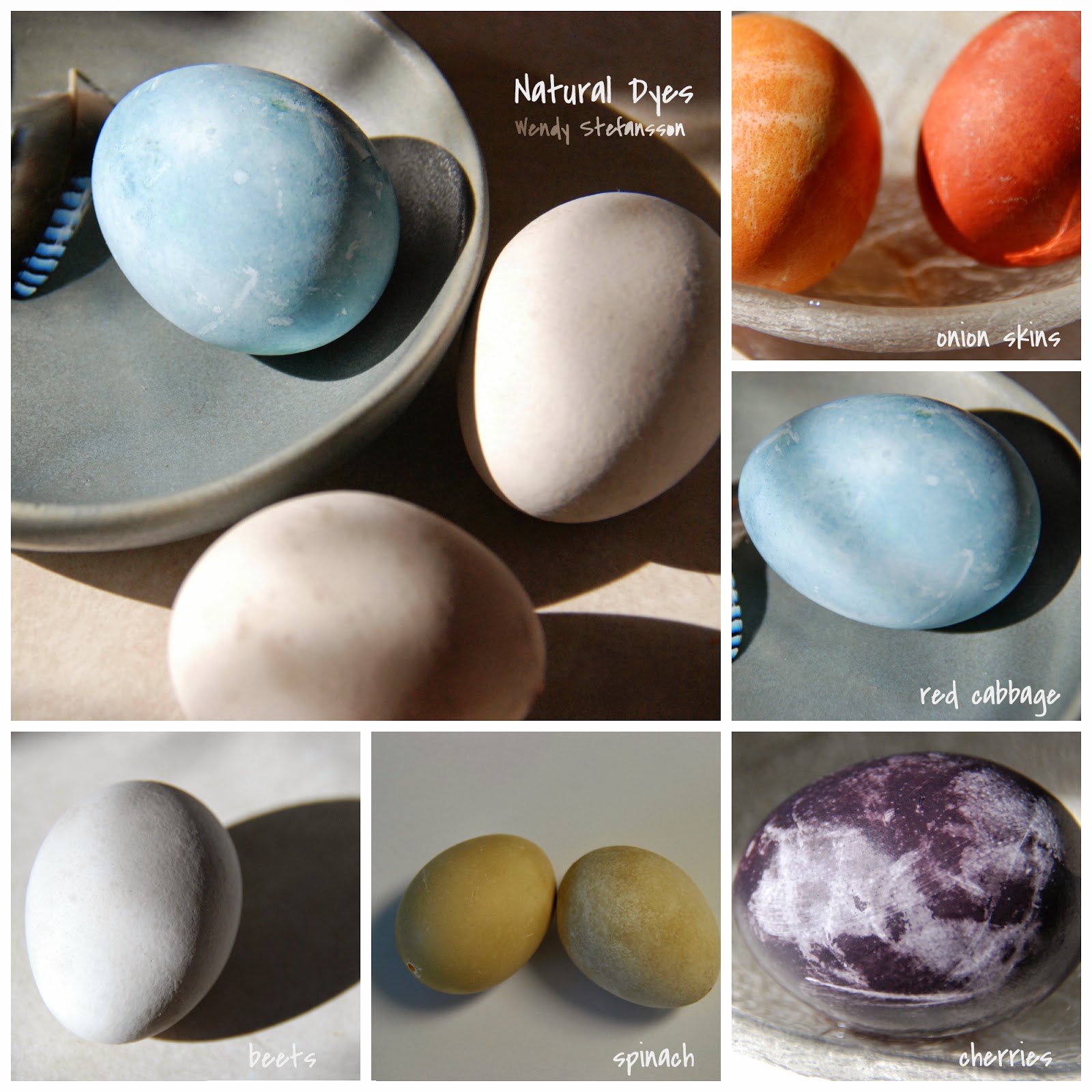I’m in love with teachings that cross over curriculum boundaries. This one hits objectives in Science, Social Studies, Language Arts and Art.
So.
I wanted to dye Easter eggs using natural dyes with my kids this year, but I ran out of time before Easter. I knew I needed to experiment a bit to see what works (as far as both products and processes).
So over the school break I played around in my kitchen at home, making dyes from the following substances: onion skins, red cabbage, beets, spinach, and cherry juice. I won’t go into the how-to’s because they’re on dozens of blogs you can find through Pinterest. But I will say, it takes a surprisingly long time to get colour from natural materials. Most of my eggs were in their dyes for at least 12 hours, and some 18. The onion skins were the fastest; but I never did get colour out of my beets.
When school resumed, I took in the results of my egg-dyeing experiments, along with some raw wool I got from my local museum. I took in a hand-knitted sock (also from the museum, and also made from unprocessed wool). And I set them all up as a provocation with a few questions:
Which dye do you think made which colour? (The big surprise being that “red” cabbage, which is actually purple, dyed the eggs blue.)
What is the material in the bowl? (the raw wool)
 |
| The provocation. |
Over the course of the week, I revealed the answers to these questions, but many more were asked. We read Weaving the Rainbow by George Ella Lyon, and Charlie Needs a Cloak by Tomie de Paola. We watched videos on youtube that showed spinning and knitting. I showed them slides of my trip to Peru, during which my family visited a small llama/alpaca farm and saw traditional dyeing and weaving being done. We talked about resourcefulness, and how people (“long ago”) would have had to make their own dyes, their own wool or other fibres, and their own clothing out of what they could find or grow locally.
 |
Then we tried to dye our wool in our natural dyes. The onion skin dye was effective, but nothing else was; even ones that had worked on the egg shells. But that was a good learning moment too. Not everything works the first time you try it. And there once was a world in which everything didn’t come with instructions on the package and money-back guarantees.
We wrote hypothetical letters to our great-grandparents, listing all of the steps they would need to complete if they wanted some new socks for the winter; starting with shearing a sheep and ending with knitting. We talked about how much time and effort that would take, and how precious those socks would be to you; how you would have fewer pairs of socks and how you would darn them if they got a hole in them. And we compared that whole process to our contemporary one: driving to Walmart to buy a pair of socks for a few dollars. Throwing them out when they got holes in them.
We talked about the awesome skills people would have had a few generations back; and about how their lives were harder than ours. How life has changed. We expanded our concepts of “traditional” and “modern,” as well as “natural” and “synthetic,” “transparent” and “opaque,” "paint" and "dye." We compared the vibrant colours of our times with the comparatively muted, watercolour tones of “long, long ago;” as well as the smelliness of things like natural wool and cabbage dye, compared to our scent-censored lives today. We talked about how much itchier and scratchier clothes must have been for our great-grandparents.
Next, we tried our hands at a simple weaving project.


No comments:
Post a Comment